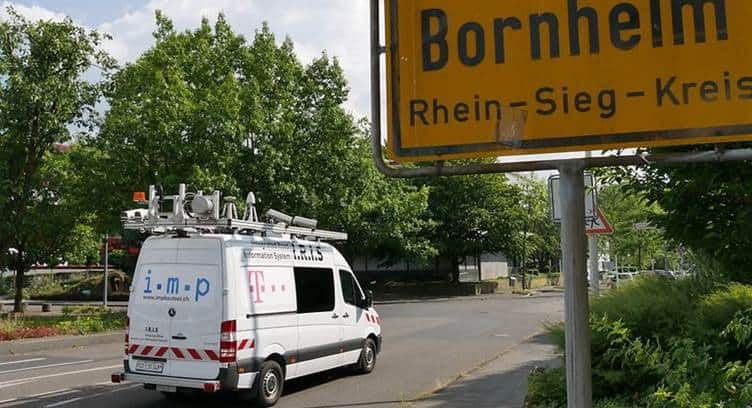Deutsche Telekom is planning for a pilot fiber rollout project using artificial intelligence for faster and optimized route planning.
A measuring vehicle was sent out in Bornheim (near Bonn) this summer, equipped with 360° cameras and laser scanners as part of Deutsche Telekom's FTTH (Fiber-to-the-home) project. It collected detailed environmental data using GPS technology. Depending on the terrain, the vehicle can cover 50 to 80 kilometres per day. All told, it collects approximately 5 GB of surface data per kilometer.
The effort and thus costs involved in laying cable depend on the existing structure. First, civil engineers open the ground and lay the conduits and fiber-optic cables. Then they have to restore the surface to its previous condition. Of course, the process takes longer with large paving stones than with dirt roads.
Fraunhofer IPM has developed software that automatically recognizes, localizes and classifies relevant objects in the measurement data.
The neural network used for this recognizes a total of approximately 30 different categories through deep learning algorithms. This includes trees, street lights, asphalt and cobblestones. Right down to the smallest detail: Do the pavements feature large pavement slabs or small cobblestones? Are the trees deciduous or coniferous? The trees' root structure also has a decisive impact on civil engineering decisions.
Once the data has been collected, a specially-trained artificial intelligence is used to make all vehicles and individuals unidentifiable. The automated preparation phase then follows in a number of stages. The existing infrastructure is assessed to determine the optimal route. A Deutsche Telekom planner then double-checks and approves it.
Walter Goldenits, Head of Technology, Telekom Deutschland
The shortest route to the customer is not always the most economical. By using artificial intelligence in the planning phase we can speed up our fiber-optic roll-out. This enables us to offer our customers broadband lines faster and, above all, more efficiently.
Prof Dr. Alexander Reiterer, who head the project at the Franunhofer IPM
We need as many details as possible. At the same time, the whole endeavour is only efficient if you can avoid laboriously combing through the data to find the information you need. For the planning process to be efficient the evaluation of these enormous amounts of data must be automated.




















